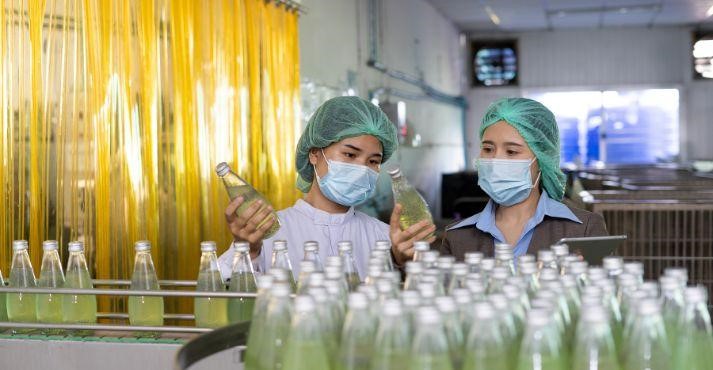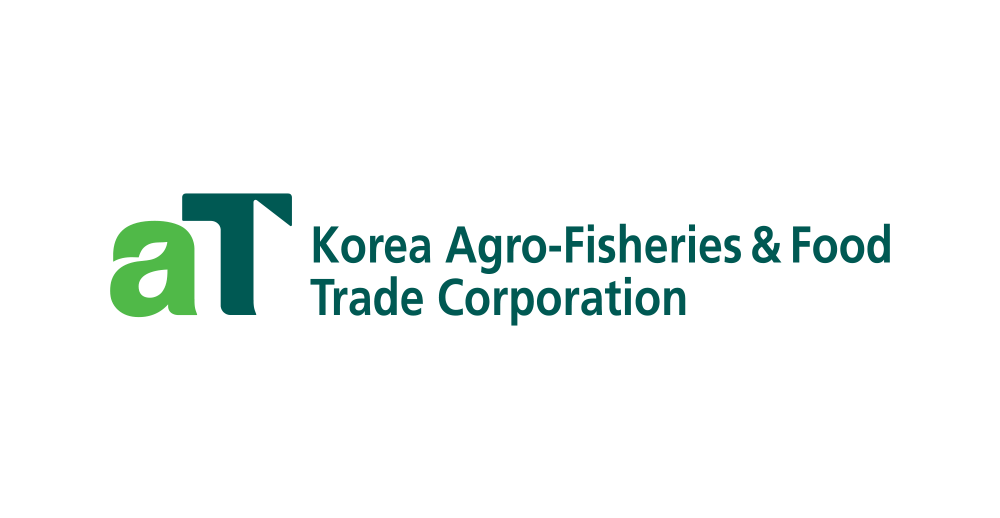Food manufacturers are at the heart of the food industry, critical in transforming raw materials into the finished products that fill our grocery stores and restaurant kitchens.
But what is a food manufacturer exactly? These companies are responsible for ensuring that food is produced safely, efficiently, and in sufficient quantities to meet global demand.
The significance of food manufacturing in Southeast Asia cannot be overstated. According to the latest research, the food industry in this region is set to grow by 7.6% annually, highlighting its vital role in supporting economic growth and food security.
This article will explore the role of food manufacturers and the food manufacturing industry and how these companies contribute to the mass production of food that feeds millions worldwide.
What is a Food Manufacturer?

A food manufacturer is a company or business involved in mass-producing food products.
These manufacturers play a fundamental role in the food production industry. They take raw materials such as grains, fruits, vegetables, and meats and transform them into packaged, ready-to-eat items found in stores and restaurants.
The process of food manufacture involves several key stages, starting with the sourcing of raw ingredients. Once sourced, these materials go through food processing, cleaned, cooked, and combined with other ingredients to create the desired product.
After processing, the food is packaged to ensure freshness and safety, often using advanced technologies in food packaging.
Finally, the finished products are distributed to retailers and restaurants, completing the cycle from farm to table. This process is essential for maintaining high standards in the food manufacturing industry to meet consumer demand for safe and convenient food options.
Roles and Responsibilities of Food Manufacturers
Food manufacturing is a complex and essential part of the food supply chain, transforming raw ingredients into the ready-to-eat products we rely on daily.
From the initial sourcing of ingredients to the final stages of packaging and distribution, food manufacturers play a critical role in ensuring that our food is safe, nutritious, and high-quality.
In this section, we’ll explore the critical components of the food manufacturing process, including production, quality control, research and development, and compliance with safety regulations.
1. Production
The production process in the food manufacturing industry is a complex series of steps designed to ensure that raw ingredients are transformed into safe, high-quality products.
This process begins with ingredient sourcing, where manufacturers select the best raw materials from trusted food suppliers. These ingredients are then subjected to food processing, where they are cleaned, cooked, mixed, and preserved using various techniques to create the final product.
Example: Tan Seng Kee Foods in Singapore exemplifies this process. Known for their wide range of noodle products, they source high-quality flour and other ingredients, process them using state-of-the-art equipment, and assemble them into the packaged products we see on supermarket shelves.
2. Quality Control
Maintaining high standards of quality is critical in food production. Food manufacturers employ rigorous quality control practices to ensure every product meets safety and quality requirements.
This involves regular testing of raw materials, monitoring the production process, and inspecting the final product before it reaches consumers.
Example: Nestle in Malaysia implements strict quality control measures at every production stage. They use advanced testing equipment and adhere to international quality standards, ensuring their products are safe and consistent.
3. Research and Development (R&D)
Research and Development (R&D) is vital for innovation in the food manufacturing industry. Through R&D, food manufacturers can create new products, improve existing ones, and adapt to changing consumer preferences.
R&D teams work on everything from flavor enhancement to packaging innovations that extend shelf life.
Example: Thai Union Group has made significant investments in R&D. Their initiatives have led to the development of new seafood products and sustainable practices that contribute to innovation and food security in the region.
4. Compliance and Safety
Food manufacturers must comply with various regulations and standards to ensure their products are safe for consumption. This includes adhering to food safety, hygiene, and labeling standards that protect consumers and maintain the integrity of the food supply chain.
Example: In Singapore, food manufacturers regulated by the Singapore Food Agency (SFA) must follow strict guidelines to ensure their products meet the highest safety standards. This compliance is key to maintaining public trust and ensuring food products are safe to consume.
Types of Food Manufacturers

Food manufacturing is a diverse industry, with different types of manufacturers specializing in various stages of food production. These manufacturers can be broadly categorized into primary, secondary, and tertiary types, each playing a distinct role in the food production industry.
1. Primary Food Manufacturers
Primary food manufacturers focus on the initial stages of food production. They handle raw materials, such as grains, fruits, vegetables, and meats, and prepare them for further processing.
These manufacturers typically operate at the beginning of the food supply chain, ensuring that raw ingredients are safe, high-quality, and ready for use in more complex manufacturing processes.
2. Secondary Food Manufacturers
Secondary food manufacturers take the raw materials provided by primary manufacturers and process them into more complex food products.
These companies are involved in the food processing stage, transforming essential ingredients into items closer to what consumers recognize as food products. Their work includes milling flour, fermenting soybeans into soy sauce, or processing meats into sausages.
3. Tertiary Food Manufacturers
Tertiary food manufacturers are focused on producing ready-to-eat and convenience foods directly available to consumers.
These manufacturers often mass-produce food products, such as frozen meals, snack foods, and beverages. Tertiary manufacturers play a critical role in providing convenient food options that fit the fast-paced lifestyles of modern consumers.
Example: San Miguel Pure Foods is a well-known tertiary food manufacturer in the Philippines. They produce a wide range of convenience foods, including ready-to-eat meals, canned goods, and processed meats, catering to the needs of busy households nationwide.
The Journey of a Food Product: Inside a Food Manufacturing Plant
A food product’s journey from raw material to finished product is a carefully controlled process that ensures quality, safety, and consistency. Inside a food manufacturing plant, various stages are involved in transforming basic ingredients into the packaged foods that reach our tables.
Here’s a look at these stages, with examples from Southeast Asia to illustrate how they work in practice.
1. Receiving and Inspection
The first step in food production is receiving and inspecting the raw ingredients. Stringent procedures ensure that these ingredients meet the required standards for quality and safety before they enter the production line.
For example, in Singapore, the government enforces strict regulations on food imports, requiring thorough inspections to prevent contamination and ensure that only high-quality materials are used in manufacturing food products. This step is critical in maintaining the overall safety and quality of the food supply chain.
2. Processing and Preparation
Once the raw ingredients have been approved, they proceed to the processing and preparation stage. This involves various techniques depending on the type of product being manufactured.
For instance, grains might be ground into flour, fruits might be juiced or pureed, and meats might be cooked or cured.
These processes are highly automated in a typical food manufacturing plant to ensure consistency and efficiency. The ingredients are mixed, cooked, and assembled into the final product, which is then prepared for packaging.
This stage is where industrial food production techniques come into play, enabling the mass production of food items that meet consumer demands.
3. Quality Control and Safety
Quality control measures are vital throughout the manufacturing process to ensure that food products meet safety standards. This includes regularly testing ingredients, monitoring production conditions, and inspecting the final product.
In Southeast Asia, many food manufacturers adhere to Hazard Analysis and Critical Control Points (HACCP) certification, a system that helps prevent food safety hazards.
For example, in Malaysia, HACCP-certified plants ensure that every production stage is carefully monitored to maintain the highest food safety standards.
4. Packaging and Labeling
The final stage of the journey is food packaging and labeling. Packaging is necessary to preserve the quality of the food, protect it from contamination, and extend its shelf life.
Additionally, clear and accurate labeling by the food manufacturer provides consumers with important information about the product, such as ingredients, nutritional content, and expiration dates.
Proper labeling is not only a regulatory requirement but also a key factor in building consumer trust and ensuring compliance with food safety standards in Southeast Asia.
Food Manufacturing vs. Food Processing

While food manufacturing and processing are closely related, they refer to different stages in the journey, from raw materials to the final food products consumers enjoy.
Understanding the distinction between these two processes is crucial for appreciating how the food production industry operates.
Focus
Food processing focuses on the initial conversion of raw materials into ingredients that can be used in further stages of production. This step involves transforming basic products, such as turning raw milk into pasteurized milk or milling wheat into flour.
In contrast, food manufacturing takes these processed ingredients and assembles them into the final food products ready for consumption.
For example, while milling flour is a form of processing, baking bread using that flour is considered manufacturing. This analogy illustrates how processing creates usable ingredients while manufacturing crafts those ingredients into finished goods.
Complexity
The complexity of food manufacturing tends to be higher than that of food processing. Food processing often involves more straightforward techniques like grinding, pasteurizing, or fermenting, which prepare raw materials for further use.
Manufacturing food products, on the other hand, may involve more complex processes that combine multiple ingredients, cooking methods, and packaging steps to create the final product.
For instance, producing a frozen meal requires various stages, including cooking, assembly, and precise packaging, all part of the manufacturing process.
Target Market
The target market for food processors and manufacturers also differs. Food processors typically sell their products to secondary food manufacturers or other businesses that use these ingredients to make more complex food items.
For example, sugar refiners sell sugar to manufacturers that produce baked goods. Food manufacturers, however, usually sell their finished products directly to consumers or retailers, such as supermarkets and restaurants.
Examples
Examples of food processing include milk pasteurization, where raw milk is treated to kill harmful bacteria, and sugar refining, which transforms raw sugar into the granulated sugar used in cooking.
In contrast, food manufacturing includes activities like bread production, where processed flour is baked into loaves, or frozen meal assembly, where various ingredients are cooked and packaged for convenience.
Challenges in Food Manufacturing
Regulatory Compliance
The journey of food manufacturing is not without hurdles, and one of the most intricate obstacles is regulatory compliance.
This section delves into the complexities manufacturers face in aligning their operations with stringent food safety and labeling regulations, a critical endeavor to safeguard consumer health and transparency.
The Web of Standards
Food manufacturers must be aware of these standards and diligently implement them. Every aspect of hygiene practices to ingredient sourcing is scrutinized to meet regulatory expectations.
Transparent Labeling
Have you ever wondered about the fine print on food labels? It’s a realm where transparency and accountability collide.
Food manufacturers are challenged to provide accurate and comprehensive information to consumers. This includes allergen disclosures, nutritional values, and ingredient origins – all crucial to informed consumer choices.
Adapting to Changes
Regulations aren’t set in stone; they evolve like recipes. Food manufacturers must remain agile, adapting their processes to stay aligned with changing standards.
This requires constant vigilance, training, and adjustments to ensure each product meets the latest regulatory requirements.
The Tug of War
Balancing regulatory compliance with operational efficiency can feel like a tug of war. Manufacturers must implement measures that ensure food safety without compromising the integrity of their products or the efficiency of their processes.
This intricate balance demands expertise, resources, and a commitment to consumer well-being.
Supply Chain Disruptions: A Complex Challenge
Unforeseen forces occasionally disrupt the smooth rhythm of food manufacturing.
In this section, we delve into the issue of supply chain disruptions – an intricate network of problems such as scarcities in raw materials, logistical obstacles, and unforeseen occurrences that can momentarily interrupt the seamless flow of culinary operations.
The Raw Material Puzzle
Imagine a chef without ingredients; that’s the impact of raw material shortages. Food manufacturers rely on a delicate balance of supplies, and any disruption – be it due to weather, market dynamics, or unforeseen circumstances – can send ripples through the entire production process.
Logistic Puzzles to Solve
Picture a puzzle where every piece is essential for the bigger picture. In the world of food manufacturing, transportation is a puzzle of its own. Delays, damages, or breakdowns can lead to a domino effect, disrupting production timelines and impacting the availability of products.
The Unpredictable Factors
Nature has its plans, often beyond human control. Natural disasters, global events, and unforeseen emergencies can jolt the food manufacturing landscape.
These unpredictable factors can disrupt supply chains and lead to production hiccups, underscoring the need for flexibility and resilience.
Navigating the Storm
While supply chain disruptions pose challenges, food manufacturers are no strangers to overcoming obstacles.
They often employ strategies to diversify suppliers, maintain safety stocks, and establish contingency plans. By adapting to disruptions, they ensure that culinary creations continue to grace our tables.
Conclusion
Now we understand what a food manufacturer is and how it’s a vital part of the food industry. It is responsible for transforming raw ingredients into the finished products that fill our shelves and tables.
Food manufacturers are critical in ensuring food safety, quality, and availability, from sourcing and processing to packaging and distribution.
Understanding the distinction between food processing and manufacturing helps clarify how these industries work together to strengthen our food supply chain.
As the food manufacturing industry grows, particularly in Southeast Asia, these companies will remain essential in meeting the global demand for safe and convenient food products.





























